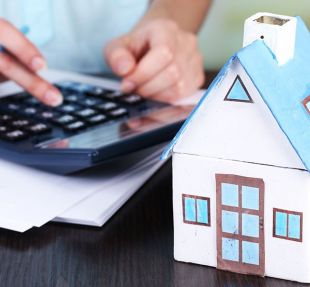Lloyd Edge was interviewed about common property investment fallacies by leading women’s lifestyle website thecarousel.com.
Property investment is ideal for a whole range of reasons, from wealth building, to helping with the children’s education, and retirement income.
But before you take the plunge into property investment, you need to know where you stand financially.
One of the first things to do is to calculate your average monthly income – not only your wage/salary, but also any extra income from part-time work or other investments.
You should also deduct your average monthly outgoings, and keep a ‘rainy day’ cash buffer so that you can continue making your loan repayments even if there’s a temporary downward blip in your income or upward blip in your expenses.
There are also a lot of old wives’ tales, misinformation and wrong assumptions floating around in this investment area, so let’s deal with four of the biggest myths right now…
MYTH 1: Buy Your Own Home First
Owning your home used to be ‘The Great Australian Dream’, but not today. Your top priority doesn’t have to be paying off the mortgage on your principle place of residence (PPOR).
Here’s why:
- A home loan weakens your serviceability with mortgage lenders. And unlike an investment property loan, it increases your cost of living without earning income.
- More often than not, buying a home means you have to live in an area below your expectations. I know this from personal experience early in my investing career!
- Typically it costs more to buy a home than to live in rented accommodation while using your capital to invest.
- Mortgage payments on your PPOR will hinder your borrowing capacity, and hurt your ability to grow your investment portfolio.
Remember, the best way to accelerate your wealth creation – and then buy your dream home – is to keep your living expenses as low as possible while you establish an investment portfolio.
MYTH 2: All Debt Is Bad

Like Myth 1, this is another hangover from the past that isn’t conducive to fast and effective wealth creation.
There isn’t just one kind of debt. There’s ‘necessary debt’, ‘good debt’ and ‘bad debt’, and it’s important to know the differences between them.
Bad debt
This is money borrowed to buy non-essentials that decrease in value, such as fancy cars, recreational vehicles, clothes and electronic gadgets.
Worse, the interest rate for a personal loan or credit card is usually much higher than a loan to buy a home or investment property. And the repayments come straight out of your pocket because the interest isn’t tax-deductible.
If you spend your surplus money on ‘lifestyle’ items without putting a solid financial strategy in place, then you’re liable to be living on the pension after you retire.
Necessary debt
The most common example of this type of debt is a home loan. The interest payments aren’t tax-deductible, but the property isn’t included in government assets tests and the debt provides a roof over your head.
If your home has made a solid capital gain after you’ve repaid the loan, then this debt can still turn out to be a good investment.
Good debt
This type of debt enables you to buy assets that are likely to increase in value, such as investment properties.
The interest on the loan is tax-deductible because it’s a business expense, and the rental income helps to repay the debt.
You can also claim depreciation and use negative gearing (ie. the costs of buying the property are larger than the rent income) to make the tax department contribute to the repayments.
Good debt uses gearing to maximise your financial return while staying within your financial limits. Interest-only loans are popular because you can secure a high-value asset for a minimum outlay while collecting the full return (rent).
The equity in your existing assets (the loan money you’ve repaid) and their capital growth can be used to obtain more loans to build your portfolio quicker without affecting your cash flow. Buying multiple properties means multiple capital growth and cash flow opportunities.
On the other hand, bad debt is borrowing money for things that don’t earn you any income, such as flash cars, electronic gadgets, holidays and other non-essentials.
With smart investing, you can pay off the debt on your home loan a lot quicker than if you were relying solely on your salary.
MYTH 3: Invest In Property To Reduce Your Tax
The most important reason to invest in property is to create wealth – not minimise your expenses!
Negative gearing a property is only worthwhile if you’re confident that the average annual capital gain will adequately outweigh the total purchase cost.
There is a tax benefit while the expenses are bigger than the income, but you have to pay the taxman when the gearing turns positive or when you achieve a capital gain on the sale.
So invest for wealth, and if you use negative gearing make sure that you buy in an area with strong prospects of long-term growth.
MYTH 4: Making Money From Property Is A Sure Thing
As with every form of investment, there’s no guarantee that buying a property will always be worthwhile.
Property values in capital cities and rural regions ebb and flow over time, and they don’t all follow the same trend. In recent years Sydney values have risen very strongly, Melbourne has been reasonably strong, and the other capital cities have only risen slightly or in some cases fallen.
It’s the same with different types of property. For instance, the current oversupply of apartments in Melbourne has made speculators regret buying in a segment that experts predicted was likely to weaken.
Thorough research and the right strategy are the keys to minimising the risks, if not avoiding them entirely.

